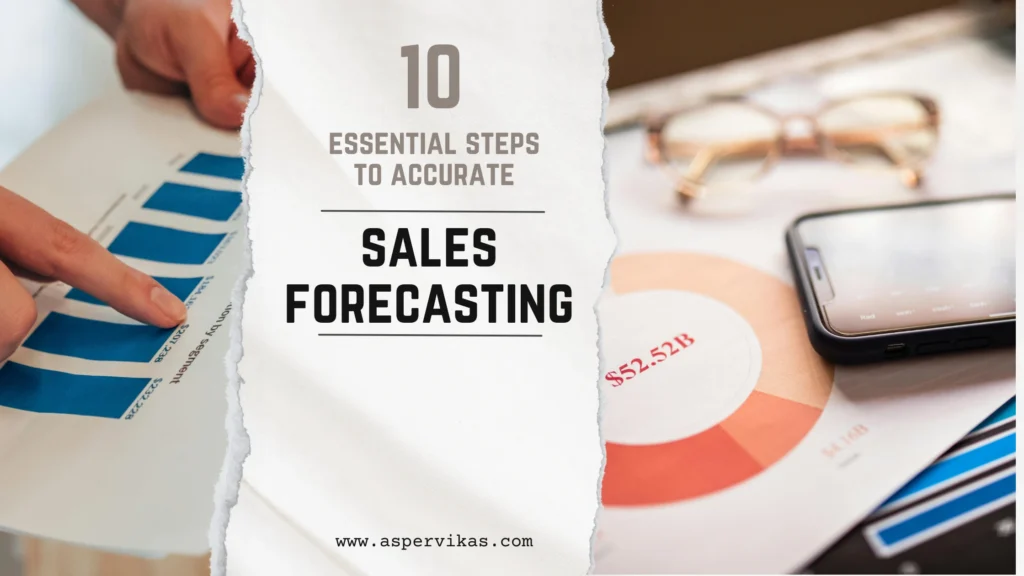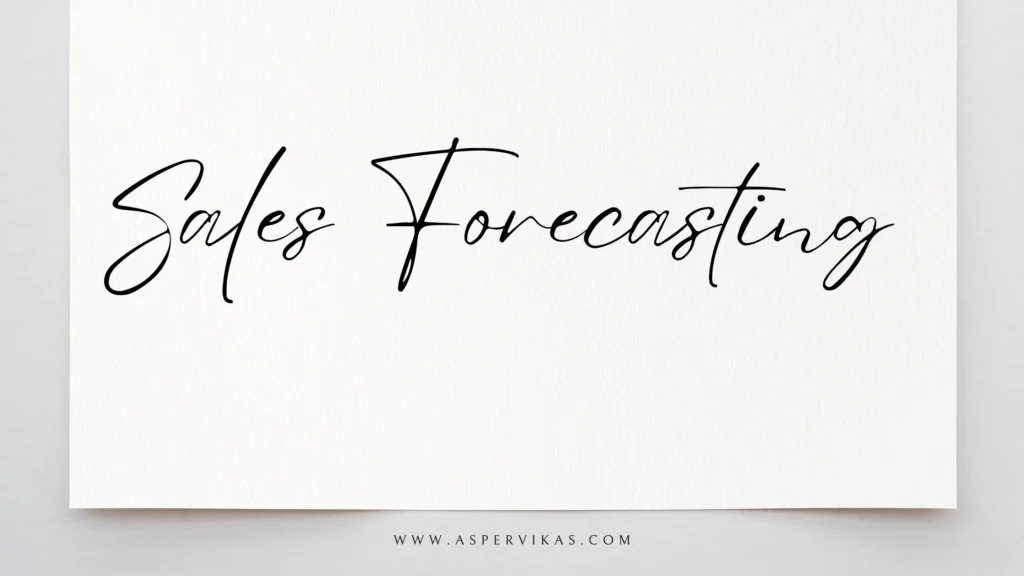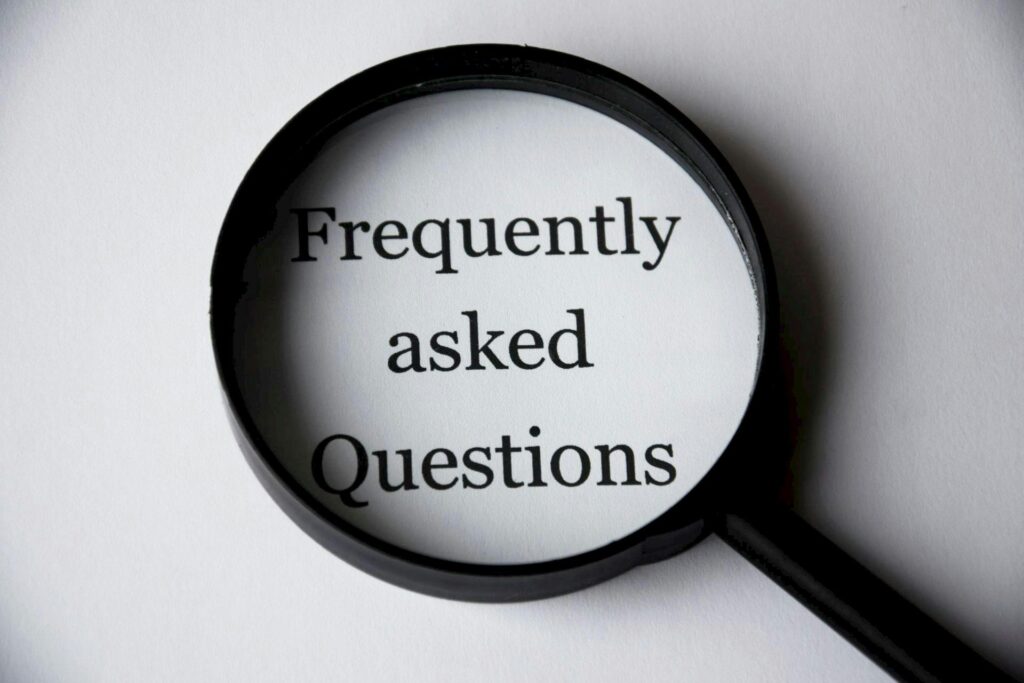Introduction
We live in the age of startups. Numerous companies emerge worldwide every year, but only a handful find success. Have you ever wondered why many of these companies fail quickly? Well, one major reason for their downfall is inaccurate sales forecasting.
Insufficient sales forecasting leads to various problems such as ineffective inventory management, dissatisfied investors, gaps in supply and demand, incorrect sales targets, and more. Surprisingly, many professionals fail to recognize the importance of sales forecasting.
As per Vikas, this topic demands greater attention and must be thoroughly understood to establish successful companies. In this post, I aim to shed light on the intricacies of sales forecasting. Continue reading to master this vital aspect for your own company.

Table of Contents
What is Sales Forecasting?

Definition and Importance
Sales forecasting is the process of estimating future sales revenue based on historical data, market trends, and business intelligence. It serves as a roadmap for businesses, helping them plan their strategies and allocate resources efficiently. Accurate forecasts are crucial for setting sales targets, budgeting, and making informed decisions about hiring, inventory, and promotions.
The importance of sales forecasting cannot be overstated. It not only guides corporate strategy but also affects cash flow management and supply chain operations. In a competitive landscape, businesses that can foresee sales trends are better equipped to respond proactively rather than reactively, thereby gaining a competitive edge.
Benefits of Effective Sales Forecasting
Effective sales forecasting offers numerous benefits that contribute to the overall health of a business. First and foremost, it leads to improved inventory management. By accurately predicting sales, companies can minimize excess stock, reduce storage costs, and prevent stockouts. This not only saves money but enhances customer satisfaction.
Additionally, accurate forecasting improves financial planning. Businesses can align their financial resources with projected sales, leading to better budgeting and cash flow forecasting. This financial clarity allows for strategic investments in growth areas and helps avoid unnecessary expenditures, ultimately ensuring long-term sustainability.
Different Methods of Sales Forecasting

Qualitative Methods
Qualitative forecasting methods rely on subjective judgment and intuition, making them suitable for new products or markets with limited historical data. One common qualitative method is expert opinion, where insights from industry experts or sales teams guide the forecasting process. Techniques like brainstorming sessions and focus groups can also provide valuable insights into customer preferences and market dynamics.
Another qualitative method is the Delphi Technique, which involves gathering input from a panel of experts through multiple rounds of questioning. This iterative process encourages experts to refine their responses based on the feedback of their peers, leading to a more accurate collective forecast. While qualitative methods can offer valuable insights, they should ideally be supplemented with quantitative data for a more robust forecasting approach.
Quantitative Methods
Quantitative forecasting methods involve statistical techniques and historical data analysis to predict future sales. These methods are grounded in mathematics and are particularly useful for established businesses with a wealth of historical sales data. Common quantitative methods include time series analysis, which analyzes patterns over specific time intervals, and regression analysis, which identifies relationships between variables.
Time series analysis, for instance, helps businesses understand seasonal trends and cyclical patterns, allowing them to adjust their forecasts based on historical performance. Regression analysis, on the other hand, can be employed to understand how different factors—such as marketing expenditures or economic indicators—impact sales, providing a clearer picture of potential future performance.
Combination Approaches
Combining qualitative and quantitative methods can yield more accurate sales forecasts. By leveraging quantitative data while incorporating the insights and intuition from qualitative assessments, businesses can create a comprehensive forecasting model that accounts for both historical performance and emerging trends. This hybrid approach allows for greater flexibility and adaptability in rapidly changing markets.
The combination method also encourages cross-departmental collaboration, as sales teams, marketing departments, and financial analysts work together to develop a unified forecast. This collaboration not only enhances the accuracy of the forecasts but also ensures that all stakeholders are aligned with the company’s strategic goals.
10 Essential Steps to Accurate Sales Forecasting
Step 1: Define Your Goals
The first step in accurate sales forecasting is to clearly define your goals. Are you looking to increase market share, launch a new product, or improve customer retention? Setting specific objectives will guide the entire forecasting process and help you select the most appropriate methods and metrics.
Establishing clear goals also allows you to prioritize your resources effectively. Having a defined target helps teams focus on what matters most, ensuring that all efforts are aligned toward achieving those objectives.
Step 2: Gather Historical Data
Gathering historical sales data is crucial for accurate forecasting. This data serves as the foundation upon which predictions are built. Collect information on past sales performance, customer behavior, seasonal trends, and market conditions. The more comprehensive your data set, the more reliable your forecasts will be.
Data can be collected from various sources, including sales records, customer databases, and external market research reports. Analyzing this data will help identify patterns that can inform future sales strategies and improve forecast accuracy.
Step 3: Analyze Market Trends
Understanding market trends is vital for effective sales forecasting. Analyze industry reports, competitor activities, and broader economic indicators to gauge potential future performance. Trends such as shifts in consumer behavior, technological advancements, or socio-economic changes can have significant impacts on sales.
Market analysis enables businesses to anticipate changes in demand and adjust their strategies accordingly. Staying informed about the macroeconomic environment allows companies to remain agile and responsive to emerging opportunities and threats.
Step 4: Understand Your Customer Base
Knowing your customer base is essential for accurate sales forecasting. Analyze customer demographics, purchasing patterns, and preferences to develop a more nuanced understanding of what drives their buying decisions. Segmentation of the customer base can provide insights into specific groups that may respond differently to marketing efforts or product offerings.
Engaging with customers through surveys, feedback forms, and social media can yield valuable insights. The more you understand your customers, the better equipped you will be to create forecasts that reflect their needs and desires.
Step 5: Choose the Right Method
Selecting the appropriate forecasting method is crucial for accuracy. Consider factors such as the availability of historical data, the nature of your business, and the specific goals you have set. For established products with ample data, quantitative methods may be most effective. Conversely, for new products, qualitative methods might provide the necessary insights.
It may also be beneficial to experiment with multiple methods and compare their outcomes. The best approach may vary over time or with changing market conditions, so flexibility is essential.
Step 6: Collaborate with Your Sales Team
Collaboration among stakeholders, particularly your sales team, is vital for accurate forecasting. Sales professionals have firsthand knowledge of customer interactions, market conditions, and competitor activities. Engaging them in the forecasting process can provide invaluable insights and enhance the accuracy of the predictions.
Regular meetings with the sales team not only facilitate the sharing of information but also foster a sense of ownership in the forecasting process. When team members see their input valued, they are more likely to be committed to achieving the sales targets set based on those forecasts.
Step 7: Create Forecast Scenarios
Developing different forecasting scenarios allows businesses to prepare for various market conditions. By creating best-case, worst-case, and most-likely scenarios, companies can anticipate how different factors may impact their sales. This prepares organizations to respond proactively rather than reactively.
Scenario planning enhances risk management by identifying potential pitfalls and opportunities. By considering multiple outcomes, businesses can devise contingency plans to navigate uncertain market conditions effectively.
Step 8: Monitor and Adjust Regularly
Sales forecasting is not a one-time task; it requires ongoing monitoring and adjustment. Regularly compare actual sales to the forecasted numbers to identify discrepancies. Analyzing why these discrepancies occurred can offer valuable lessons for future forecasts.
Adjustments should be made as new data comes in, including customer feedback, market changes, and economic shifts. Staying adaptive ensures that forecasts remain relevant and accurate.
Step 9: Review External Factors
External factors, such as economic conditions, regulatory changes, and technological advancements, can significantly influence sales. Regularly review these factors to assess their impact on your forecasts. Keeping an eye on these external influences allows businesses to make informed adjustments to their forecasts, adapting to the ever-changing landscape.
Incorporating these factors into your forecasting process fosters a more holistic approach. This not only enhances the accuracy of the forecasts but also helps businesses remain agile and prepared for future challenges.
Step 10: Document and Share Insights
Documenting the forecasting process, methodologies used, and insights gained is crucial for institutional knowledge. Sharing this information across departments ensures that everyone is aligned and can contribute effectively to future forecasting efforts.
Creating a centralized repository of forecasting data, insights, and outcomes can also facilitate better decision-making. Teams can refer to past forecasts to learn from successes and mistakes, continuously refining their approach.

Conclusion
The Future of Sales Forecasting
The future of sales forecasting is bound to be shaped by technological advancements, such as artificial intelligence and machine learning. These technologies enable businesses to analyze vast amounts of data in real-time, uncovering patterns and insights that traditional methods may overlook. As forecasting becomes increasingly data-driven, the accuracy and reliability of sales predictions are expected to improve dramatically.
Moreover, the integration of advanced analytics tools will make it easier for organizations to simulate different scenarios and adapt their strategies accordingly, further enhancing the agility of companies in an ever-evolving market.
Final Thoughts
Sales forecasting is a critical component of strategic planning for any business. By understanding its significance, employing effective methods, and following a structured approach, organizations can position themselves for sustainable growth. The insights gained from accurate forecasts not only guide decision-making but also foster a culture of proactive planning and responsiveness within organizations.
FAQs

1. What is the primary purpose of sales forecasting?
The primary purpose of sales forecasting is to estimate future sales revenue, helping businesses make informed decisions regarding resource allocation, budgeting, and strategic planning.
2. What are the two main types of sales forecasting methods?
The two main types of sales forecasting methods are qualitative methods, which rely on subjective judgment and insights, and quantitative methods, which utilize historical data and statistical analysis.
3. How often should a business update its sales forecasts?
A business should update its sales forecasts regularly, ideally on a monthly or quarterly basis, to incorporate new data and market trends for increased accuracy.
4. Why is collaboration important in the sales forecasting process?
Collaboration is important because it brings together diverse perspectives and insights from different departments, such as sales, marketing, and finance, leading to more accurate and comprehensive forecasts.
5. How can technology improve the sales forecasting process?
Technology can improve the sales forecasting process through advanced analytics, machine learning algorithms, and real-time data analysis, enabling businesses to uncover insights and patterns more effectively.
More readings on sales forecasting
What is sales forecasting: Definition, methods, best practices


22 Replies to “10 Essential Steps to Accurate Sales Forecasting”
Hm 02 Oct, 2024
The explanation is intricate covering all aspects in detail
Vikas Taware 06 Oct, 2024
“Thank you! Your feedback inspires me to continue sharing my experiences and knowledge.”
DR rajesh KANAUJIA 02 Oct, 2024
Superb
Vikas Taware 06 Oct, 2024
“Thank you, Rajesh bhai! Your feedback inspires me to continue sharing my experiences and knowledge.”
Tushar Javkar 02 Oct, 2024
Vikas, your blog has become a weekly routine for me. Appreciate your efforts to simplify sales process through this initiative. Keep it up mate!
Vikas Taware 06 Oct, 2024
“Thank you, Tushar! Your comment has made my day. Such positive feedback inspires me to continue sharing my experiences and knowledge.”
Kishor Gokhru 02 Oct, 2024
Very informative. Must be implement for great results.
Vikas Taware 06 Oct, 2024
“Thank you, Kishor sir! Your feedback inspires me to continue sharing my experiences and knowledge.”
Farida 02 Oct, 2024
To the point well done
Vikas Taware 06 Oct, 2024
“Thank you, Farida! Your feedback inspires me to continue sharing my experiences and knowledge.”
Sanjay N Khandelwal 02 Oct, 2024
Jai Ramjiki….very insightful and helpful 👍
Vikas Taware 06 Oct, 2024
“Thank you, Sanjay bhai! Jai Ramji ki. Your feedback inspires me to continue sharing my experiences and knowledge.”
Bhoomi 02 Oct, 2024
I thoroughly enjoyed reading this post! Your perspective on this topic is truly enlightening.
Vikas Taware 06 Oct, 2024
“Thank you, Yoko! Your feedback inspires me to continue sharing my experiences and knowledge.”
Manasvi 02 Oct, 2024
Indeed a very informative blog, very well written.
Vikas Taware 06 Oct, 2024
“Thank you, Manasvi! Your feedback inspires me to continue sharing my experiences and knowledge.”
Sanjay Batale 02 Oct, 2024
A good write up Vikas.
Business = sales and therefore Sales forecasting = business forecasting.
Analytics play a very important role and can help in getting constant inputs
Vikas Taware 06 Oct, 2024
“Thank you, Sanjay sir! Your feedback inspires me to continue sharing my experiences and knowledge.”
Karan Bhardwaj 02 Oct, 2024
I thoroughly enjoyed reading your blog post! The content was not only engaging but also insightful, offering actionable tips that can be immediately applied to improve sales strategies. Your clear, concise writing and the practical examples you provided made complex concepts easy to understand. I particularly appreciated the emphasis on building authentic relationships with customers, which is often overlooked in other sales-related articles. Keep up the great work – this is the kind of content that keeps me coming back for more!”
Vikas Taware 06 Oct, 2024
“Thank you, Karan! Your feedback inspires me to continue sharing my experiences and knowledge.”
Ashish 03 Oct, 2024
Good one
Vikas Taware 06 Oct, 2024
Thank you Ashish. Such comments motivates me to keep sharing my experience and expertise.